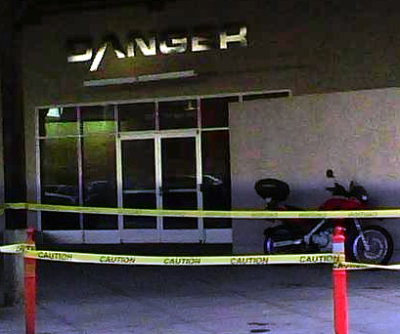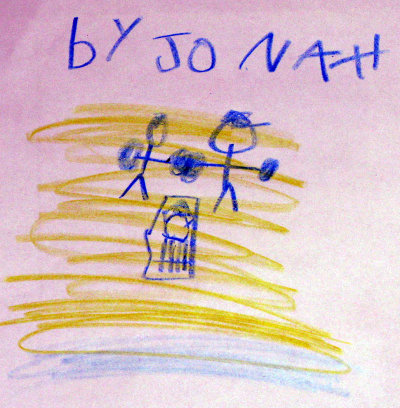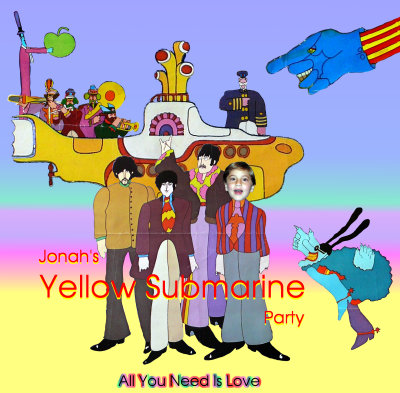On April 1st, 2004, I sent this message to my coworkers at Danger:
From: bobg
Subject: MMS testing
Hi everyone,
As you probably know, MMS is finally nearing a production release. We’d like to make sure it’s rock-solid for release, and the best way to achieve that is to have lots of people — people just like you — testing it.
If you haven’t used MMS: it’s a mechanism for mailing multimedia messages between phones, very much like e-mail, except that e-mail can’t go to phones.
Because MMS is like e-mail, it struck some of us that the best way to encourage lots of MMS testing is to disable the internal mail proxies for the next few days. So some time late today we’ll be turning off the [internal mail service] and I want to encourage everyone to use MMS instead.
If you find bugs, please file them in [our bug-tracking system]. Other comments (positive and negative) go to […]
Thanks for your cooperation,
– Bob
The internal mail service was and is an essential tool for the engineering team at Danger and MMS made a very poor substitute, not least because unlike e-mail, which Danger employees could read on their desktops and on their smartphones, MMS was for the phones only.
At once I received a torrent of objections in e-mail. “Are you serious?” read one. “This is going to massively piss me off, for whatever it’s worth.” Another read, “The IS department would implore you to reconsider.” Still another, from someone who first believed and then realized it was a hoax: “Holy crap, Bob, you gave me a heart attack!” Several folks who weren’t fooled sent me “attaboy” messages.
By any measure it was a hugely successful April Fools prank, causing no real harm but plenty of teeth gnashing and forehead slapping among its victims. But later that day I sent a followup message to everyone that elevated my prank to classic status, in the judgment of one Danger veteran who called it “the icing on the cake” and another who proclaimed it “the funniest message ever sent at Danger.” The subject line was, “Match that outrage!” It listed nine Danger employees in one column, and nine frantic reactions to my earlier announcement in a second column, and invited everyone to match each utterance to the hoodwinked coworker who’d made it. It’s a measure of how tightly knit the Danger team was in those days that most people were able to identify most of the speakers from such brief snippets as, “How can I use MMS when my SIM won’t work with my return address?” and “It will fuck me hard if you disable the [internal mail service].”
As April Fools Day, 2005, approached, coworkers began whispering to me, “Got something good planned?” I demurred in the blandest tones possible, but what no one knew was that I had been laying groundwork for months. Interspersed among my regular work-related edits of the Danger mail system software, I planted extremely obfuscated snippets of code like this:
sub v {
my $p = uncompress("x\x{9c}\x{8b}\x{d2}\x{f2}\x{f3}...");
my @u = unpack(unpack('Z*', $p), $p);
return $u[$_[1]];
}
Even if someone had noticed these illicit insertions and could decipher them, all they’d find was an innocuous new stage of processing added to the long sequence by which the text of an e-mail message is transmitted to the user’s Hiptop (a.k.a. Sidekick, Danger’s smartphone). All the new stage did was to contact a particular computer on the network, feed the text to it, and retrieve a revised version of the text from it — a perfectly ordinary thing for a network-based service like the Danger mail system to do, where one such stage might extract hyperlinks, another might simplify formatting for smartphone display, and so on.
The particular computer, however, was my office desktop, running a “filter” that performed whimsical transformations of the incoming text. There were thirty-two different kinds of transformation, and one was chosen at random for each incoming message. One of them turned the text into Pig Latin:
Atway onceway Iway eceivedray away orrenttay ofway objectionsway inway eway-ailmay. “Areway ouyay erioussay?” eadray oneway. “Isthay isway oinggay otay assivelymay isspay emay offway, orfay ateverwhay it’s orthway.” Anotherway eadray, “Ethay ISway epartmentday ouldway imploreway ouyay otay econsiderray.” Illstay anotherway, omfray omeonesay owhay irstfay elievedbay andway enthay ealizedray itway asway away oaxhay, otewray, “Olyhay apcray, Obbay, ouyay avegay emay away earthay attackway!” Everalsay olksfay owhay weren’t ooledfay entsay emay “attaboyway” essagesmay.
Another replaced selected words with homophones (sound-alike words):
At once eye received a torrent of objections in e-mail. “Are yew serious?” red one. “This is going tu massively piss mee off, four whatever it’s wurth.” Another read, “The IS department wood implore ewe to reconsider.” Still another, frum someone hou furst believed and then realized it waas a hoax, rote, “Holy crap, Bob, yew gave mea a hardt attack!” Several folkes who weren’t fooled scent me “attaboy” messages.
One oddly annoying one broke words apart into syllables:
At once I re ceived a tor rent of ob jec tions in e-mail. “Are you se ri ous?” read one. “This is go ing to mas sive ly piss me off, for what ev er it’s worth.” An oth er read, “The IS de part ment would im plore you to re con sid er.” Still an oth er, from some one who first be lieved and then re al ized it was a hoax, wrote, “Ho ly crap, Bob, you gave me a heart at tack!” Sev er al folks who wer en’t fooled sent me “at ta boy” mes sages.
One replaced random words with “blah.”
At blah I received a torrent of blah in e-mail. “Are you serious?” read one. “This is blah to massively blah blah off, for whatever it’s blah.” Another read, “The IS department would implore blah to reconsider.” Still blah, from someone who first blah and blah blah blah blah blah blah, blah, “Holy crap, Bob, you gave me a heart blah!” Several folks blah weren’t blah sent me “blah” messages.
One inserted verbal fillers.
At once I, er, received a torrent of objections, you know, in e-mail. “Are you serious?” read one. “This is going to massively piss, ummm, me off, for whatever it’s worth.” Another read, “The IS department would implore you to reconsider.” Still, um, another, from someone who first, um, believed and then, uh, realized, uhhh, it was a hoax, wrote, “Holy crap, Bob, you gave, ummm, me a heart attack!” Several folks who weren’t fooled sent me “attaboy” messages.
One translated the text into Ubbi Dubbi. One inserted fnords into the text. One made some words “stutter.” One swapped vowels at random. One chose a single letter and replaced every occurrence of that letter with a different one.
In addition to these homegrown transformations (and more) were those contained in the venerable GNU Talk Filters package, including “Valley Girl,” “Elmer Fudd,” “Cockney,” “Redneck,” and of course “Pirate”:
At once I received a torrent o’ objections in e-mail. “Are ye serious?” read one. “This is going t’ massively piss me off, by Blackbeard’s sword, fer whatever ’tis worth.” Another read, “Th’ IS department would implore ye t’ reconsider, arrrr.” Still another, by Blackbeard’s sword, from someone who first believed and then realized it were bein’ a hoax, I’ll warrant ye, wrote, aye, “Holy crap, to be sure, Bob, ye gave me a heart attack!” Several folks who weren’t fooled sent me “attaboy” messages.
The stealth code I had planted in the mail system was set to activate automatically at midnight on April 1st and to deactivate at noon. Any e-mail messages received during those twelve hours would look decidedly odd (while safely preserved in unaltered form on our servers) — imagine the fun!
I hasten to mention that the affected version of the Danger mail system was the internal one, where odd behavior was tolerated because it was used only for testing and development by Danger’s own engineers.
…And, unfortunately, by our CEO, Hank, in a misguided attempt to be on the cutting edge of Danger technology. Also unfortunately, April 1st, 2005, was a difficult moment in Danger’s relationship with an important OEM partner. So when Hank read a short message from a junior executive at that company early that morning on his Hiptop and saw a reference to “Davey Jones’ locker,” and the final vowel dropped from words like “the” and “to,” and “you” changed to “ye,” and “arrrr” in the signoff, his first reaction was outrage at the level of disrespect being shown him. Hank escalated the matter to the junior executive’s boss, and that led to some more phone calls, and so on and so on, and I gather that quite a lot of top-level corporate officers were inconvenienced and embarrassed for a good hour or two before they figured out that the message Hank received was not the same one that the junior executive had sent. That realization caused Hank to conclude that Danger’s network had been hacked and he mobilized various Danger VP’s to discover the breach.
Now, most of the rest of the company realized at once what was happening, and that I was probably responsible for it. I was again racking up “attaboys.” When asked, I tried to feign innocence, which I did well enough in e-mail, but to those few who confronted me in person I simply could not contain my mirth.
Upper management was still in intruder-alert mode, however, and almost as soon as I sauntered nonchalantly into the office around 9 that morning, I was drafted into the effort to locate the hacker. I pretended to go off and investigate, reporting in e-mail a short time later that “there doesn’t seem to be any way for a hacker to gain access or to put a filter in front of the [internal mail service], so I’m 99% sure the prankster, whoever it is, is internal,” which was of course entirely truthful if not the entire truth. My intention was to put our senior execs at ease while still enjoying my fun. I already knew that the Operations staff, who were bearing the brunt of Hank’s call to arms, understood what was happening and were unworried. (One response to my report said, “A prankster with e-mail knowledge, hmmmm, who could that be BOB?”) Customer Service had determined easily that the production version of the service — the one with paying customers — was unaffected.
At noon the prank ended automatically. I went out and bought a selection of delicious pastries that I distributed as a peace offering to those who’d been inconvenienced. By this point I’d heard about the embarrassing fiasco that had taken place that morning between Hank and the OEM, so for him I bought a box of expensive chocolates.
It didn’t help. I’d earned Hank’s ire and never really shook it in the years since. An official reprimand was placed in my personnel file and the matter came up during my annual salary review. On the bright side, my boss and my boss’s boss both expressed their support to me — the whole thing, they agreed, was Hank’s own fault for relying unadvisedly on the internal development version of the Danger service, and he should have been a bigger sport about having been fooled. As a direct result of this episode, Danger created another internal version of the service from which non-engineers were explicitly banned.
My colleagues and I have long joked about how lucky I am that April 1st fell on the weekend in 2006 and 2007, because surely the next April Fools Day would mark the end of my career at Danger. Now April 1st is on a weekday again and it is the end of my career at Danger: today is the day I tell Danger that I resign, just in time to avoid becoming part of Microsoft. And I’m not fooling.
 The very day that I learned Microsoft would be buying Danger, and that I would therefore reap a small windfall, Andrea (not yet having heard the news) proposed the idea of hiring a Beatles cover band to play at Jonah’s Yellow Submarine-themed sixth birthday party. At once I thought of Jeff Spicoli, Sean Penn’s character from Fast Times at Ridgemont High, of whom we’re told, via a title card at the end of the film:
The very day that I learned Microsoft would be buying Danger, and that I would therefore reap a small windfall, Andrea (not yet having heard the news) proposed the idea of hiring a Beatles cover band to play at Jonah’s Yellow Submarine-themed sixth birthday party. At once I thought of Jeff Spicoli, Sean Penn’s character from Fast Times at Ridgemont High, of whom we’re told, via a title card at the end of the film:


